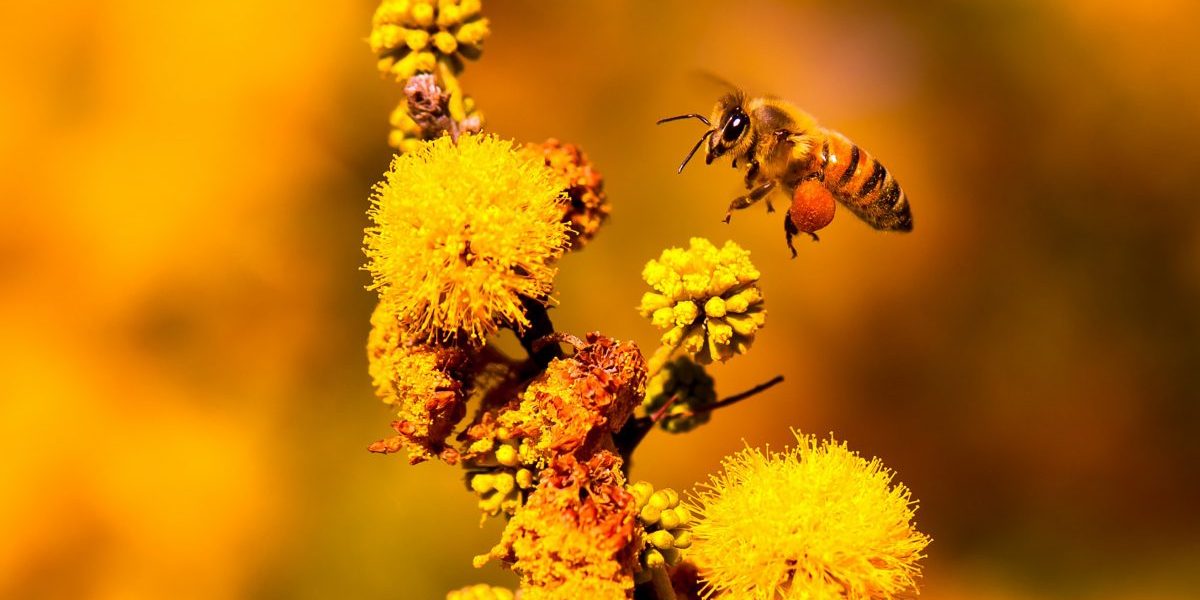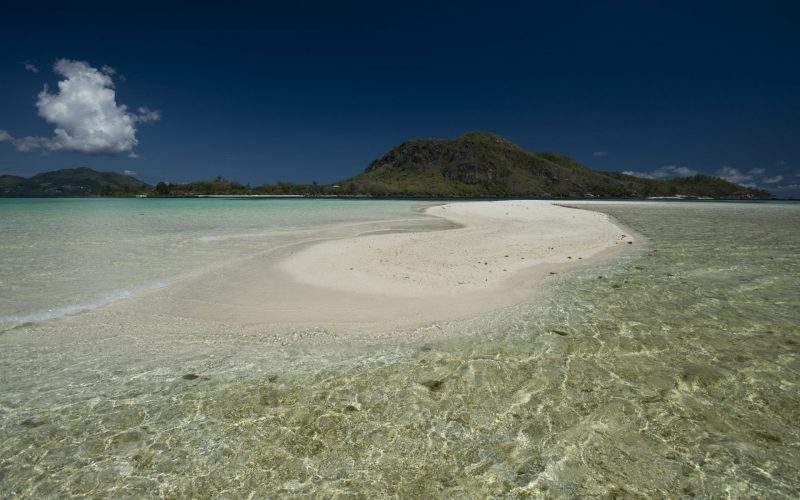Recommendations
- National full-cost accounting of natural capital and ecological infrastructures in terms of lifesupporting biodiversity and ecosystem services, and climate change mitigation and adaptation, is urgently required.
- Investment in NbS (nature-based solutions) must become the underpinning objective of all future development planning, and development policies must seek to restore, enhance and maintain connectivity between areas of natural habitat to enable change-driven biodiversity responses, improved ecosystem health and continued provision of ecosystem services.
- Given the rate of environmental change, including climate change, significant investments in the means and capacity for measuring policy effectiveness within such a new development framework are imperative.
- Working with youth optimises the unique opportunity provided by the economic stimulus packages required during and after the COVID-19 pandemic for an innovative ‘green stimulus’ approach to facilitate the above investments.
Executive summary
Despite 2020, the ‘Super Year for Nature’, being disrupted by the COVID-19 pandemic, it still provides a unique opportunity for Africa to embrace a new ‘post-2020’ vision. Africa is already severely negatively impacted by ecosystem degradation – without transformative change this will accelerate, to the detriment of Africa’s people. To change this trajectory the continent rapidly needs to implement development policies that recognise its natural capital and the life-supporting biodiversity and ecosystem services (BES) this provides as being integral to delivering the broadest range of crucial socio-economic benefits. Such policies will underpin a recognition of the importance of the environment to Africa’s development, as described in the AU’s Agenda 2063. Maintaining and enhancing the BES contribution to human well-being requires implementing transformative policies that incorporate national full-cost accounting of natural capital; incentivise investment in restoration of degraded ecosystems and ecological infrastructure; and invest in the means for measuring this new policy effectiveness. The economic stimulus packages required during and after the COVID-19 pandemic provide a unique opportunity for an innovative ‘green stimulus’ approach to enable this.
Introduction
Global biodiversity is governed by a range of multilateral environmental agreements (MEAs), including the Convention on Biological Diversity (CBD), the Convention on Conservation of Migratory Species, the Convention on International Trade in Endangered Species of Wild Fauna and Flora, the International Treaty on Plant Genetic Resources for Food and Agriculture, the Ramsar Convention on Wetlands, the World Heritage Convention, and the International Plant Protection Convention. Despite this plethora of governance agreements, the current system of MEAs has been ineffective in responding to the biodiversity crisis to date, as documented in the 2019 IPBES Global Assessment on Biodiversity and Ecosystem Services.1ES Brondizio et al., eds., The Global Assessment Report on Biodiversity and Ecosystem Services (Bonn: Intergovernmental SciencePolicy Platform on Biodiversity and Ecosystem Services Secretariat, 2019), https://ipbes.net/global-assessment.
Consequently, 2020 was intended to be a year of important global negotiations on the future of biodiversity, culminating in the 15th Conference of Parties (COP15) of the CBD in October 2020. This so-called ‘Super Year for Nature’ was to result in the ‘Post-2020 Global Biodiversity Agenda’, whereby COP15 would finalise negotiations on a new 10-year framework for the conservation of biodiversity to replace the CBD Aichi 2020 targets, which expire this year. However, the outbreak of the COVID-19 pandemic has resulted in the postponement if not cancellation of most of these important meetings (some smaller, preparatory ones have gone online). However, as one door closes another opens – the economic stimulus packages being proposed to reboot national economies during and after the pandemic provide a unique opportunity to mobilise the necessary resources for a ‘new deal for nature’ going forward, perhaps nowhere more so than in Africa.
State of Africa’s biodiversity and biodiversity governance
Africa is undergoing rapid transformation in terms of its natural resources, most significantly through population growth and agricultural expansion, land and water use, urbanisation and the extractives sector. The most recent African regional assessment of the state of the continent’s biodiversity and ecosystem services (BES) spells out that biodiversity and nature’s contributions to people in Africa are ‘economically, socially and culturally essential in providing the continent’s food, water, energy, health and secure livelihoods, and represent a strategic asset for sustainable development and achievement of the 2030 Sustainable Development Goals’.2Emma Archer et al., eds., Regional Assessment Report on Biodiversity and Ecosystem Services for Africa (Bonn: IPBES, 2018), https://ipbes.net/assessment-reports/africa.
However, Africa’s biodiversity and ecosystems, while still relatively intact, are severely degraded from these competing uses and from over-use. The assessment highlights that the current loss and decline of biodiversity is reducing nature’s contributions to people, and undermining human well-being across the continent. It identifies unregulated land cover change, ie, habitat loss and over-exploitation, as the primary cause of biodiversity loss and ecosystem degradation to date. However, given Africa’s extreme vulnerability to the impacts of climate change, it notes that climate change is likely to be a dominant driver of change in the future.3Archer et al., Regional Assessment Report.
Globally, all of the recent UN environmental assessments – such as those from the Intergovernmental Platform on Climate Change, the Intergovernmental Platform on Biodiversity and Ecosystem Services (IPBES) and UN Environment’s Sixth Global Environmental Outlook – stress the need for ‘transformative’ policy change in addressing the biodiversity and climate crises, and achieving sustainable development and the eradication of poverty.4 V Masson-Delmotte et al., eds., Special Report: Global Warming of 1.5C (Geneva: Intergovernmental Panel on Climate Change, 2019), https://www.ipcc.ch/sr15/; Brondizio et al., The Global Assessment Report; UN Environment, Sixth Global Environmental Outlook (GEO6) (Cambridge: Cambridge University Press, 2019), https://www.unenvironment.org/resources/global-environmentoutlook-6 These assessments also emphasise throughout that ‘environmental’ policies generally do not address the underlying causes of degradation, greenhouse gas (GHG) emissions and biodiversity loss. Instead, these are driven by other sectors, most especially the extractives sector, as detailed by the most in-depth global analysis to date.5UN Environment, Integrated Resources Panel, Global Resources Outlook (Nairobi: UN Environment, 2019), https://www.resourcepanel.org/reports/global-resources-outlookThis analysis highlights that over 90% of biodiversity loss and freshwater stress, as well as more than 50% of GHG emissions contributing to climate change, arise from the extractives sector, including agriculture. The report finds that6UN Environment, Global Resources Outlook.
[s]ince the 1970s, global population has doubled, use of natural resources has tripled, and global Gross Domestic Product has grown fourfold. These trends have required vast amounts of natural resources to fuel economic development and the attendant improvements in human well-being. However, these gains have come at a tremendous cost to our natural environment, ultimately impacting human wellbeing and exacerbating inequalities within and between countries.
Thus the ‘biodiversity’ sector cannot address these drivers of loss without a fundamental shift in governance structure and authority, both nationally and regionally. With Africa’s population set to double (from 1 to 2 billion) by around 2050,7UN Population Fund, State of World Population 2019 (Geneva: UNFPA, 2019), https://www.unfpa.org/sites/default/files/pub-pdf/UNFPA_PUB_2019_EN_State_of_World_Population.pdf.it is impossible for the continent’s natural resource base to maintain itself and meet these demands without substantive changes in governance.8Archer et al., Regional Assessment Report.
COVID-19 is only one in a long line of zoonotic diseases that have ‘jumped’ from wildlife to humans, and the severity of this pandemic is resulting in a strong push to end the live wildlife trade and take much stronger action against illegal wildlife trade. For Africa, both of these are increasingly egregious threats to society, biodiversity conservation and sustainability.9International Consortium on Combating Wildlife Crime, Meeting Report: First Global Meeting of the Wildlife Enforcement Networks, 2015, https://www.cites.org/sites/default/files/common/docs/ICCWC%20Report%20-%20First%20Global%20Meeting% 20of%20the%20WENs%20-%20Final.pdfWeak laws and poorly funded conservation agencies are enabling international criminal networks, terrorist groups and armed rebels to profit from the vast sums of money generated from the illegal wildlife trade, which then fuels conflicts and social instability, and destroys ecosystems and species.10UN Environment and Interpol, The Rise of Environmental Crime: Threats to Sustainable Development from Illegal Exploitation
and Trade in Wildlife and Forest Resources (Nairobi: UN Environment and Interpol, 2016), https://www.unenvironment.org/newsand-stories/press-release/unep-interpol-report-value-environmental-crime-26.
The scientific warnings across all BES are increasingly stark and cannot be over-stressed. For example, in addition to the more obvious collapse of BES such as global fisheries, the looming ‘insect-apocalypse’ will collapse agriculture as we know it.11Pedro Cardoso et al., “Scientists’ Warning to Humanity on Insect Extinctions”, Biological Conservation 242 (February 2020),http://dx.doi.org/10.1016/j.biocon.2020.108426.The first comprehensive assessment of the health of global insect populations warned recently that we are causing insect extinctions by driving habitat loss, degradation, and fragmentation, use of polluting and harmful substances, climate change, and co-extinction of species dependent on other species. The assessment stresses that with insect extinctions, we lose diversity across space and time with consequent homogenisation, large parts of the tree of life, unique ecological functions and traits, and fundamental parts of extensive networks of biotic interactions. The importance of these for human well-being cannot be over-stated, as such losses lead to the decline of key ecosystem services, such as pollination, upon which humanity depends.
The extent and pace of natural resource use and climate change demands a revision of current policies on natural resources in general. For example, the observed temperature changes in Southern Africa over the past 20–50 years have in several instances already reached those predicted for ‘near-future’ scenarios (2035+), indicating that the change scenarios used in national studies on which policies are based are too conservative. As a result, current policies and/or adaptation strategies are also likely too conservative and not proactive enough.12Nicola Van Wilgen et al., “Rising Temperatures and Changing Rainfall Patterns in South Africa’s National Parks”, InternationalJournal of Climatology 36, no. 2 (2016): 706–721.In addition, African development policies are largely sector based, which hampers the shift to the integrated, cross-sectoral approach that is necessary on both regional and national scales.
While measuring policy effectiveness is complex, assessments show that the most effective policies are those that contribute to a wider objective of cumulative socio-economic benefits, going beyond single sectoral investments.13UN Environment, GEO6, “Conclusions on Policy Effectiveness”, Chapter 18, 2019, https://wedocs.unep.org/bitstream/handle/20.500.11822/27670/GEO6_CH18.pdf?sequence=1&isAllowed=yThus more synergistic and integrated development planning as the basis for all decision-making is imperative, as is investment in the means and capacity for measuring their effectiveness.14Archer et al., Regional Assessment Report.Natural resources cannot be managed successfully without consideration of all the other sectors previously regarded as competing for access to land, water and other resources but now increasingly recognised as dependent on natural capital and ecosystems services provided by intact ecosystems, including carbon sequestration. The so-called ‘leverage points’ for identifying and addressing these underlying drivers are described more fully in the recent IPBES Global Assessment.15Brondizio et al., The Global Assessment Report
Changing trajectory: Identifying post-2020 biodiversity policy priorities
Development planning to date has involved the use and conversion of ecosystems without accounting for this natural capital; an approach that has resulted in the ongoing loss of critical ecosystem services. Future development policies must ensure full-cost accounting of natural capital, and investment in NbS16E Cohen-Shacham et al., Nature-based Solutions to Address Global Societal Challenges (Gland: International Union for Conservation of Nature, 2016), https://portals.iucn.org/library/sites/library/files/documents/2016-036.pdf.–strengthening ecological infrastructures for continued delivery of vital ecosystem services in the face of increasingly volatile and extreme events and of rapidly changing landscapes and biota. UN Environment has stressed that ‘restoration of terrestrial, inland water and marine ecosystems will be needed to re-establish ecosystem functioning and the provision of invaluable life-support services’.17UN Environment, Dead Planet, Living Planet (New York: UN Environment, 2010), http://wedocs.unep.org/handle/20.500.11822/7895.Thus investing in restoring ecological infrastructures as the foundation of development objectives is critical to reducing ecosystem vulnerability and enhancing livelihoods.
Such policies would place Africa at the forefront of the ambitious UN Decade on Restoration 2021–2030,18UN Decade on Ecosystem Restoration, 2021–2030, https://www.decadeonrestoration.org/as well as give significant impetus to the AU’s recognition of the importance of the environment. Agenda 2063, the development agenda adopted continent-wide, aspires to a continent where ‘Africa’s unique natural endowments, its environment and ecosystems, including its wildlife and wild lands are healthy, valued and protected, with climate resilient economies and communities’.19AU, Agenda 2063: The Africa We Want (Addis Ababa: AU, 2015), https://au.int/sites/default/files/documents/33126-doc-03_popular_version.pdf.Further, Africa’s natural resources have been recognised by its youth as the sector with the greatest potential to generate employment opportunities going forward, most especially ‘multisectoral green jobs’.20UN Environment, Global Environment Outlook for Youth, Africa, 2019,https://www.unenvironment.org/resources/report/globalenvironment-outlook youth-africa.Written by African youth for African youth, the Global Environment Outlook for Youth, Africa outlines how a potential African ‘Green Economy’ provides both work opportunities and BES restoration, in tandem, to the benefit of both people and biodiversity. Africa’s youth then are calling on policymakers to lead on a new economic development path founded on natural capital accounting and environmental restoration. Importantly, this potential was endorsed by environment ministers at the most recent African Ministerial Conference on the Environment (AMCEN) in November 2019.21African Ministerial Conference on the Environment, “The Durban Declaration” 17th AMCEN, November 14 15,2019,https://wedocs.unep.org/bitstream/handle/20.500.11822/30786/AMCEN_17L1.pdf?sequence=1&isAllowed=y.Finally, such policies would provide additional impetus for implementation of the Pan-African Action Agenda on Ecosystem Restoration for Increased Resilience, adopted by African countries at the 14th CBD COP in December 2018.22UN Convention on Biological Diversity, Pan-African Action Agenda on Ecosystem Restoration for Increased Resilience, CoP14, December 2018, https://www.cbd.int/doc/c/274b/80e7/34d341167178fe08effd0900/cop-14-afr-hls-04-final-en.pdf
Such restoration is certainly possible, even for the entire global oceans ecosystem, based on what we already know regarding the successful recovery of marine populations, habitats and ecosystems following past conservation interventions,23Carlos Duarte et al., “Rebuilding Marine Life”, Nature 580 (2020): 39–51, https://doi.org/10.1038/s41586-020-2146-7.and represents a doable Grand Challenge for humanity, an ethical obligation and a smart economic objective to achieve a sustainable future. This lays out a blueprint for the implementation of the environmental dimensions of both the AU’s African Integrated Maritime Strategy24AU, Africa’s Integrated Maritime Strategy (2050 AIM Strategy) (Addis Ababa: AU, 2012), https://cggrps.com/wp-content/uploads/2050-AIM-Strategy_EN.pdfand the AMCEN’s Blue Economy Strategy.25AMCEN, “The Durban Declaration”.Similar interventions are possible for addressing the ‘insect apocalypse’26Cardoso et al., “Scientists’ Warning to Humanity”.and other ecological challenges.
As now increasingly described by the World Bank27Stéphane Hallegatte and Stephen Hammer, “Thinking Ahead: For a Sustainable Recovery from COVID-19”, World Bank, Blog, March30, 2020, https://blogs.worldbank.org/climatechange/for-a-sustainable-recovery-from-covid-19.and many others,28Club of Rome, “Open Letter to Global Leaders – A Healthy Planet for Healthy People”, March 26, 2020, https://clubofrome.org/impact-hubs/climate-emergency/open-letter-to-global-leaders-a-healthy-planet-for-healthy-people/the economic stimulus packages being floated to reboot economies during and after the COVID-19 pandemic offer an ideal opportunity to invest in ecological infrastructures, if planned within a ‘Green Stimulus Framework’ whereby restoring degraded forestlands and landscapes could create many jobs over the short term while also generating net benefits worth hundreds of billions of dollars from watershed protection, better crop yields, and forest products.
Conclusion
While the COVID-19 pandemic has disrupted global negotiations for the ‘Super Year for Nature’, the economic stimulus packages designed to reboot economies are a unique opportunity to transform Africa’s development agenda to underpin and implement the environmental dimensions of the AU’s Agenda 2063 and the many supporting AMCEN decisions. Adopting a ‘Green Stimulus Framework’, built around natural capital accounting and investment in the restoration of ecological infrastructure, and finding NbS to the myriad development challenges Africa faces, will greatly enhance the ability of the continent’s biodiversity and ecosystems to continue to provide the underpinning life-support services required. Africa should grasp this unexpected window of opportunity to lead on ensuring these priorities are prominent in the post-2020 global biodiversity framework.
Acknowledgement
SAIIA gratefully acknowledges the support of the Swedish International Development Cooperation Agency (SIDA) for this publication.
Footnotes
[1] ES Brondizio et al., eds., The Global Assessment Report on Biodiversity and Ecosystem Services (Bonn: Intergovernmental SciencePolicy Platform on Biodiversity and Ecosystem Services Secretariat, 2019), https://ipbes.net/global-assessment.
[2] Emma Archer et al., eds., Regional Assessment Report on Biodiversity and Ecosystem Services for Africa (Bonn: IPBES, 2018), https://ipbes.net/assessment-reports/africa.
[3] Archer et al., Regional Assessment Report.
[4] V Masson-Delmotte et al., eds., Special Report: Global Warming of 1.5C (Geneva: Intergovernmental Panel on Climate Change, 2019), https://www.ipcc.ch/sr15/; Brondizio et al., The Global Assessment Report; UN Environment, Sixth Global Environmental Outlook (GEO6) (Cambridge: Cambridge University Press, 2019), https://www.unenvironment.org/resources/global-environmentoutlook-6.
[5] UN Environment, Integrated Resources Panel, Global Resources Outlook (Nairobi: UN Environment, 2019), https://www.resource panel.org/reports/global-resources-outlook.
[6] UN Environment, Global Resources Outlook.
[7] UN Population Fund, State of World Population 2019 (Geneva: UNFPA, 2019), https://www.unfpa.org/sites/default/files/pubpdf/UNFPA_PUB_2019_EN_State_of_World_Population.pdf.
[8] Archer et al., Regional Assessment Report.
[9] International Consortium on Combating Wildlife Crime, Meeting Report: First Global Meeting of the Wildlife Enforcement Networks, 2015, https://www.cites.org/sites/default/files/common/docs/ICCWC%20Report%20-%20First%20Global%20Meeting%20of%20the%20WENs%20-%20Final.pdf.
[10] UN Environment and Interpol, The Rise of Environmental Crime: Threats to Sustainable Development from Illegal Exploitation and Trade in Wildlife and Forest Resources (Nairobi: UN Environment and Interpol, 2016), https://www.unenvironment.org/newsand-stories/press-release/unep-interpol-report-value-environmental-crime-26.
[11] Pedro Cardoso et al., “Scientists’ Warning to Humanity on Insect Extinctions”, Biological Conservation 242 (February 2020), http://dx.doi.org/10.1016/j.biocon.2020.108426.
[12] Nicola Van Wilgen et al., “Rising Temperatures and Changing Rainfall Patterns in South Africa’s National Parks”, International Journal of Climatology 36, no. 2 (2016): 706–721.
[13] UN Environment, GEO6, “Conclusions on Policy Effectiveness”, Chapter 18, 2019, https://wedocs.unep.org/bitstream/handle/20.500. 11822/27670/GEO6_CH18.pdf?sequence=1&isAllowed=y.
[14] Archer et al., Regional Assessment Report.
[15] Brondizio et al., The Global Assessment Report.
[16] E Cohen-Shacham et al., Nature-based Solutions to Address Global Societal Challenges (Gland: International Union for Conservation of Nature, 2016), https://portals.iucn.org/library/sites/library/files/documents/2016-036.pdf.
[17] UN Environment, Dead Planet, Living Planet (New York: UN Environment, 2010), http://wedocs.unep.org/handle/20.500.11822/7895.
[18] UN Decade on Ecosystem Restoration, 2021–2030, https://www.decadeonrestoration.org/.
[19] AU, Agenda 2063: The Africa We Want (Addis Ababa: AU, 2015), https://au.int/sites/default/files/documents/33126-doc-03_popular_version.pdf.
[20] UN Environment, Global Environment Outlook for Youth, Africa, 2019, https://www.unenvironment.org/resources/report/globalenvironment-outlook-youth-africa.
[21] African Ministerial Conference on the Environment, “The Durban Declaration” 17th AMCEN, November 14–15, 2019, https://wedocs.unep.org/bitstream/handle/20.500.11822/30786/AMCEN_17L1.pdf?sequence=1&isAllowed=y.
[22] UN Convention on Biological Diversity, Pan-African Action Agenda on Ecosystem Restoration for Increased Resilience, CoP14, December 2018, https://www.cbd.int/doc/c/274b/80e7/34d341167178fe08effd0900/cop-14-afr-hls-04-final-en.pdf.
[23] Carlos Duarte et al.,“Rebuilding Marine Life”, Nature 580 (2020): 39–51, https://doi.org/10.1038/s41586-020-2146-7.
[24] AU, Africa’s Integrated Maritime Strategy (2050 AIM Strategy) (Addis Ababa: AU, 2012), https://cggrps.com/wp-content/uploads/ 2050-AIM-Strategy_EN.pdf.
[25] AMCEN, “The Durban Declaration”.
[26] Cardoso et al., “Scientists’ Warning to Humanity”.
27 Stéphane Hallegatte and Stephen Hammer, “Thinking Ahead: For a Sustainable Recovery from COVID-19”, World Bank, Blog, March 30, 2020, https://blogs.worldbank.org/climatechange/for-a-sustainable-recovery-from-covid-19.
[28] Club of Rome, “Open Letter to Global Leaders – A Healthy Planet for Healthy People”, March 26, 2020, https://clubofrome.org/impact-hubs/climate-emergency/open-letter-to-global-leaders-a-healthy-planet-for-healthy-people/.








